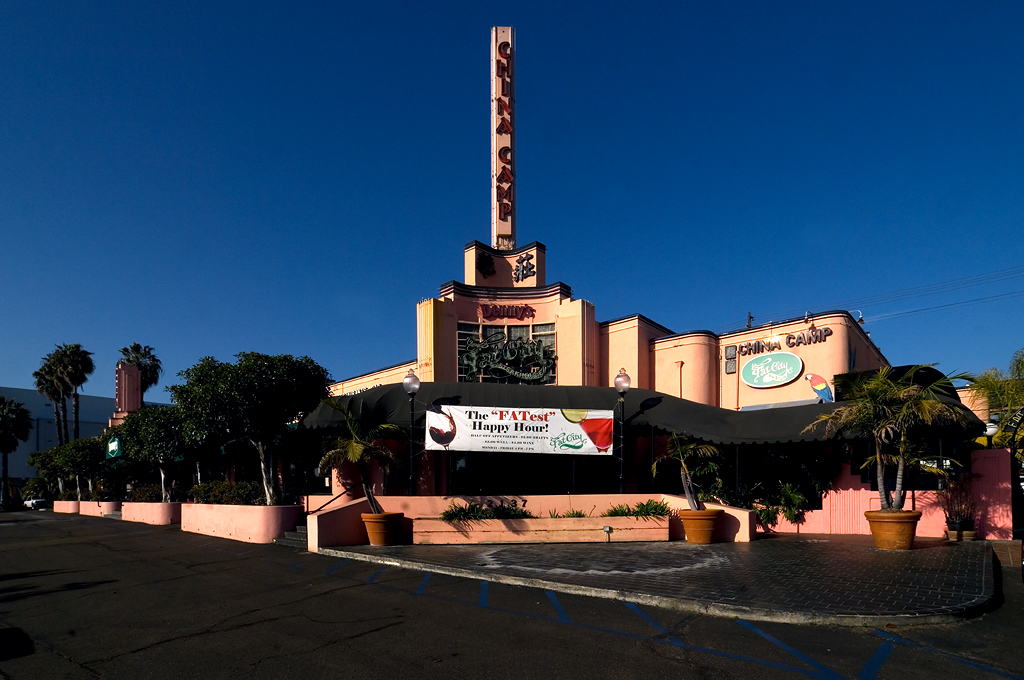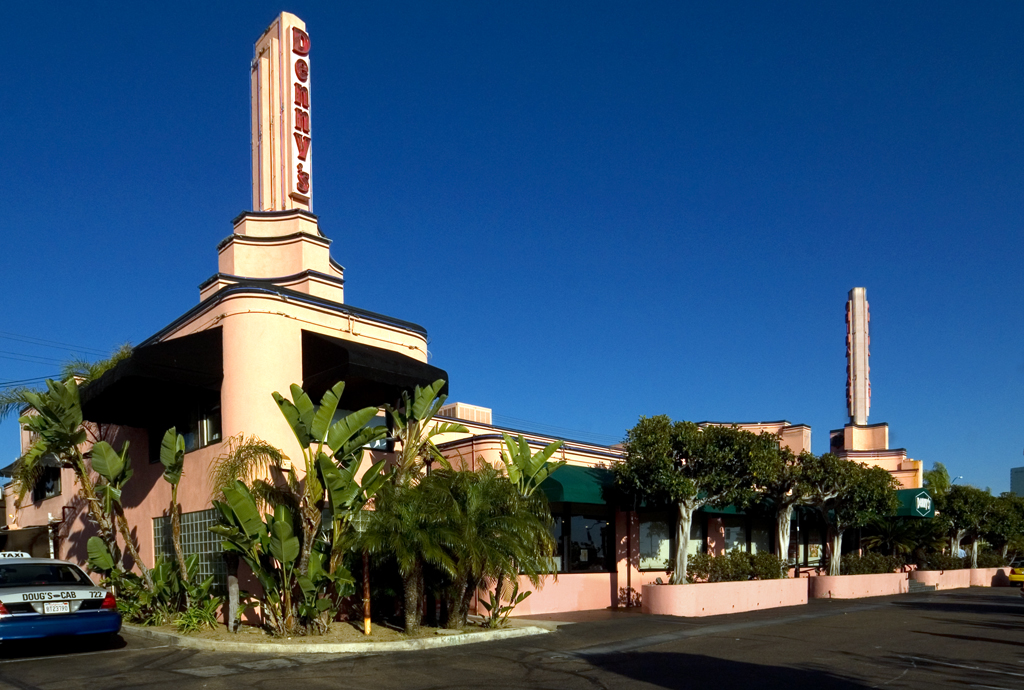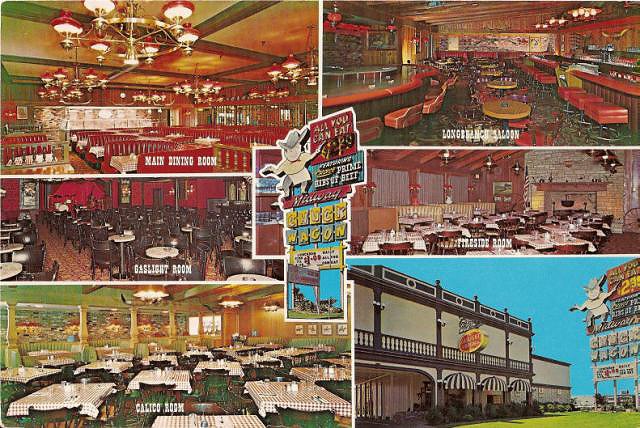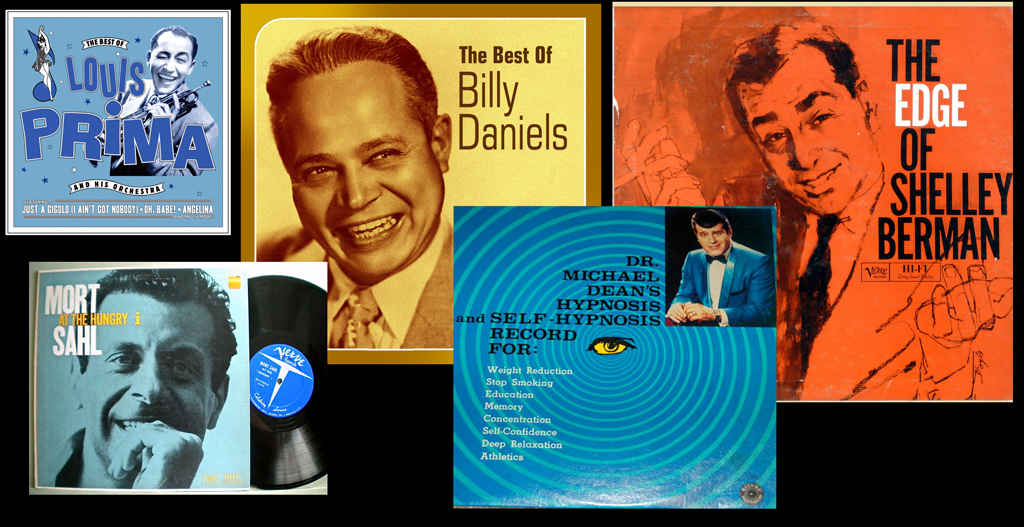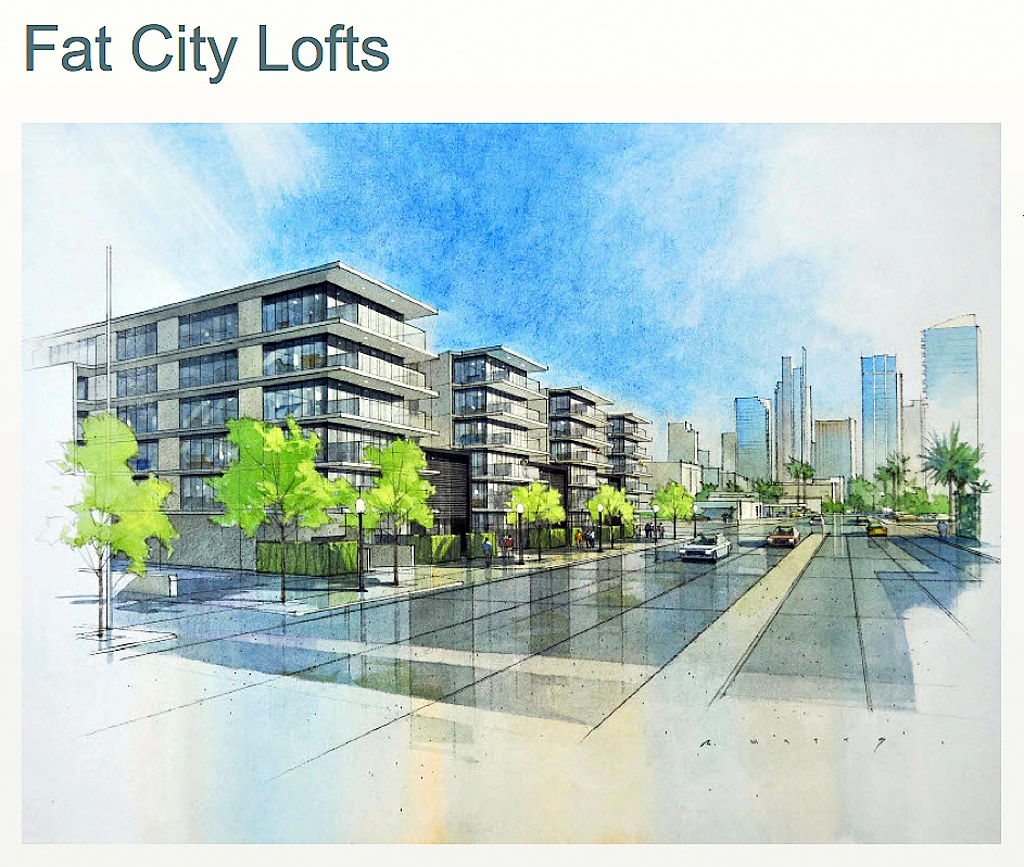 Dan Soderberg Photography
Dan Soderberg Photography
Fat City Endangered
It is one of San Diego’s most familiar landmarks. The regal Art Deco Streamline Moderne Fat City building located at 2137 Pacific Highway. It is home to Fat City Bar and Steakhouse, China Camp (now closed), and Denny’s. Its owner, Tom Fat, renown restaurateur and prominent figure in San Diego’s Asian Pacific Islander community, passed away in 2007 at age 66. Some four years later the landmark building that is/was home to his highly successful eateries appears headed for demolition.
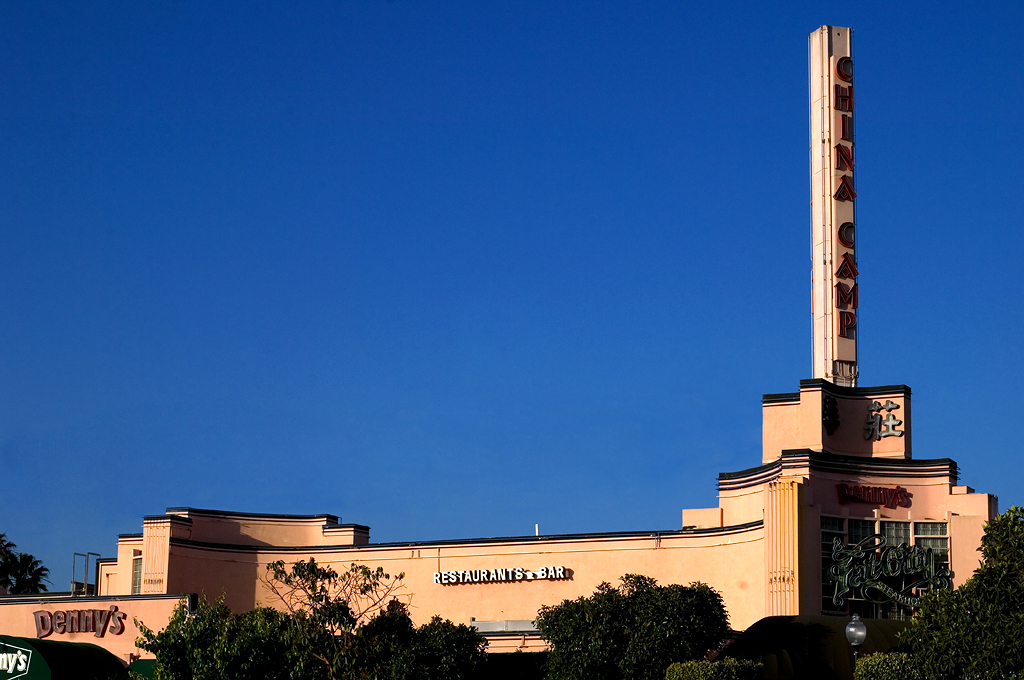
Tom Fat took over the boarded-up site in 1977 and brought the classic art deco complex back to its former glory. He practiced sustainability before anyone even heard about it. That trait was likely learned from his father Frank Fat. In 1939, Tom’s father took over a run-down building in Sacramento, only a block from the Capitol building, and turned it into the celebrated Frank Fat’s restaurant.
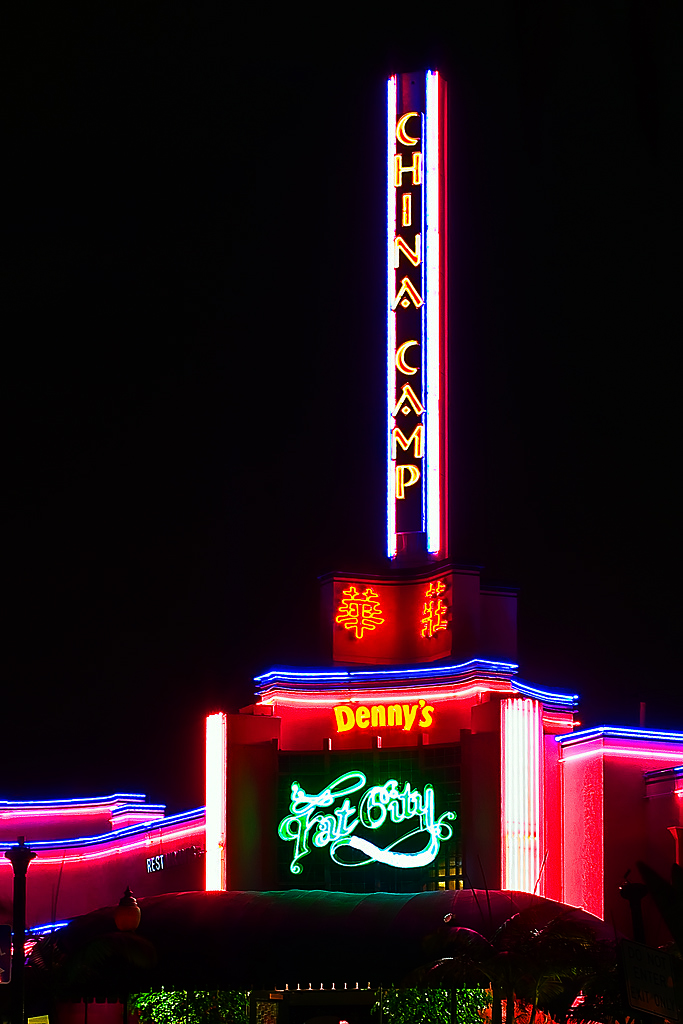
The restoration and remodeling took nearly 3 years. The crowning touch was the installation of a mile of neon–certainly San Diego’s most wonderfully opulent neon showcases. A richly colorful and now rare art form. Tom Fat paid homage to an elegant era of design by bringing back this building’s flamboyance and flair.
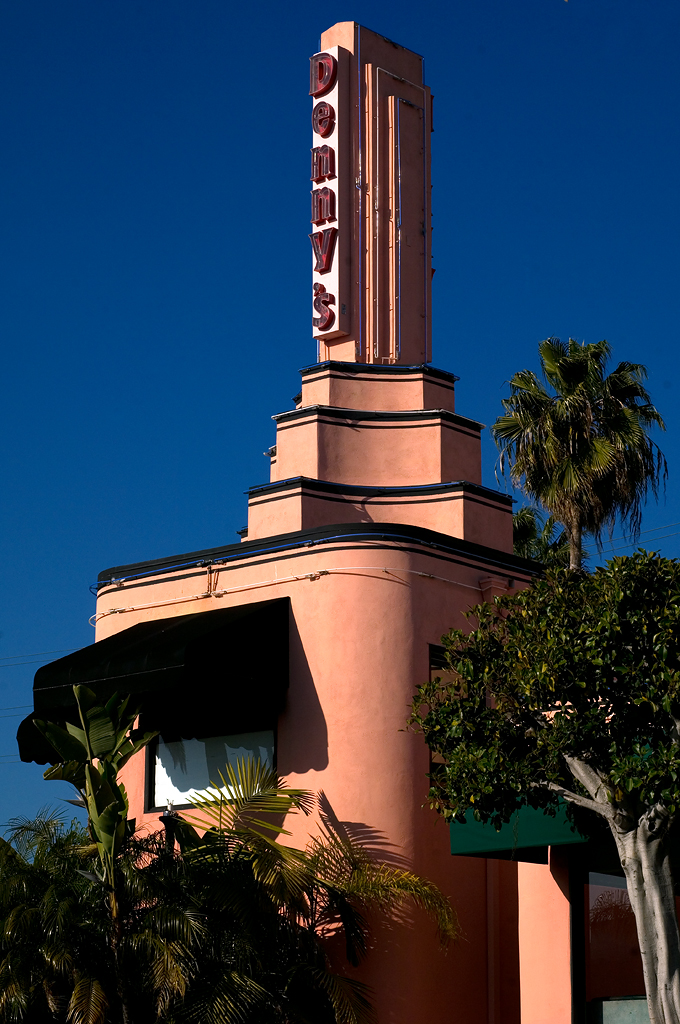 Tom Fat’s great work earned him a 1981 Orchid Award–one of San Diego’s highest architectural honors. Fat City’s neon art and architecture became feature articles in San Diego Magazine, Designer’s West, Times Magazine, Lighting Dimension, and the Smithsonian Neon Art photo magazine.
Tom Fat’s great work earned him a 1981 Orchid Award–one of San Diego’s highest architectural honors. Fat City’s neon art and architecture became feature articles in San Diego Magazine, Designer’s West, Times Magazine, Lighting Dimension, and the Smithsonian Neon Art photo magazine.
The restaurants helped energize the restaurant scene of all downtown. The Fat City Steakhouse became ground zero for power lunches and dinners where local leaders were known to gather. Tom Fat was highly involved in and dedicated to the community. He was close to elected representatives, and many called upon him for advice.
Our research is still in progress. But we know this Art Deco treasure was built between 1940 and 1942 as Big Top Restaurants. Then a few years later it was just known as Top’s. The early name most famously associated as proprietor was Yale Kahn. He and his brothers were sons of Russian Immigrants who instilled a sense of hard work in their children. Brothers Irvin, Henry and Julius Kahn made their mark in San Diego with real estate development in Clairemont, University City, Rancho Penasquitos, and Mira Mesa.
But Yale Kahn was a fulcrum around which all the major popular nightclub entertainment in San Diego spun. The San Diego Union stated “Yale Kahn, a man whose knack for business earned him a spot in San Diego history†(San Diego Union November 8, 1959). Constantly in the news media spotlight during the 1950s, the Kahn brothers brought nationally and internationally famous performing acts to his restaurants and nightclubs and rubbed shoulders with politicians and business people throughout the region.
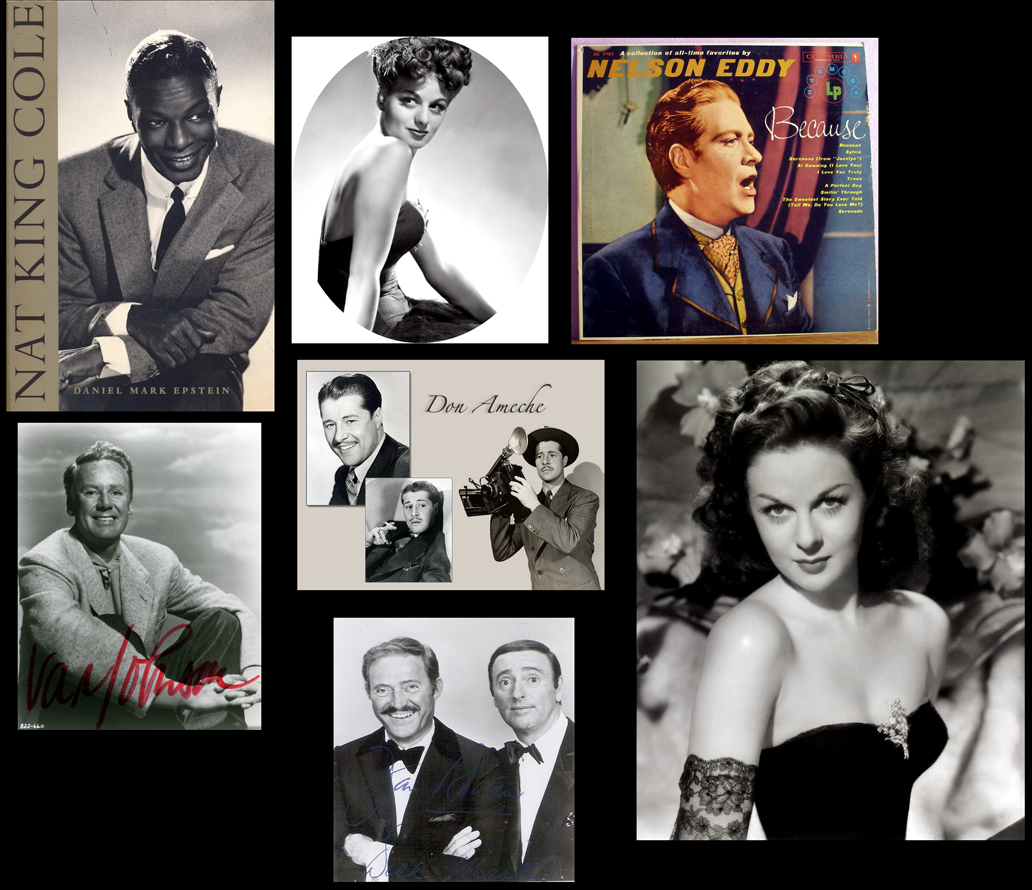
At Top’s Nightclub Yale brought in top stars of the day. Nat King Cole, Shelley Winters, Nelson Eddy, Van Johnson, Don Ameche, Susan Hayward, Dan Rowan and Dick Martin, to name a few. He made Top’s an entertainment capitol in San Diego.
Yale Kahn also ran the Texas Liquor Houses, the Roaring 20’s Nightclub on Fletcher Parkway in El Cajon, the nightclub in the Clairemont Bowl and Bradley’s (restaurant and nightclub) at Horton Plaza in the mid 1950s, making entertainment available to families. But one of Kahn’s most popular venues were the Chuck Wagon Restaurants in San Diego–most notably the Midway Chuck Wagon with its Gaslamp Room.
The Midway Chuck Wagon and Gaslamp Room drew enormous crowds to see such famous entertainers as Louis Prima, Billy Daniels, Shelly Berman, Mort Saul, and Dr. Dean (hypnotist). Regis Philbin worked there as a Master of Ceremony.
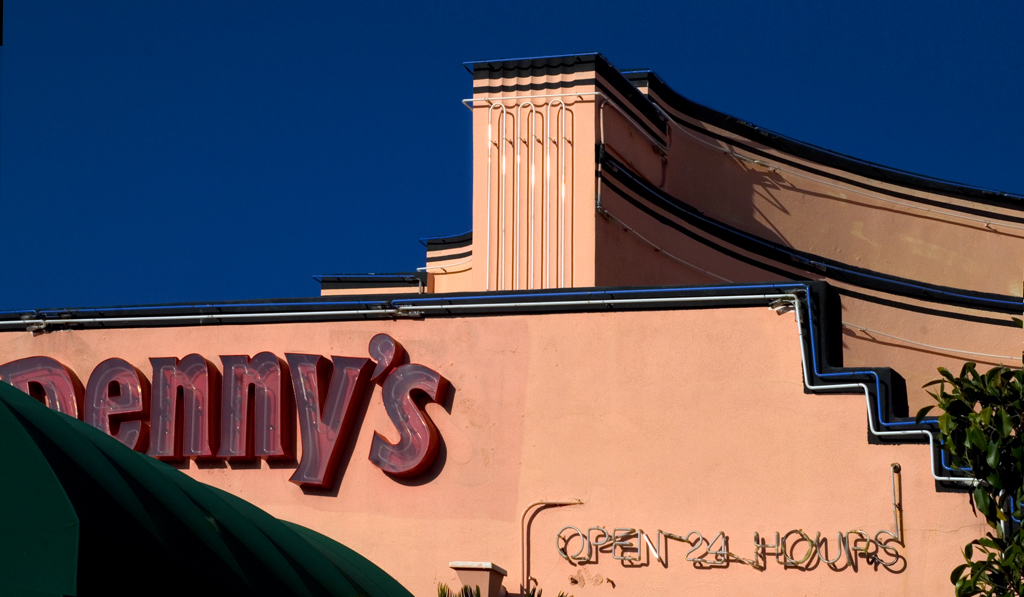 Some common links between Tom Fat and the Kahn Brothers. They all stood in high esteem in the eyes of politicians and business people in the San Diego Region. Top’s night club attracted both political and business leaders, just as Fat City Steakhouse did years later. This magnificent structure stands as witness to their noble efforts, these exemplary business leaders in San Diego history.
Some common links between Tom Fat and the Kahn Brothers. They all stood in high esteem in the eyes of politicians and business people in the San Diego Region. Top’s night club attracted both political and business leaders, just as Fat City Steakhouse did years later. This magnificent structure stands as witness to their noble efforts, these exemplary business leaders in San Diego history.
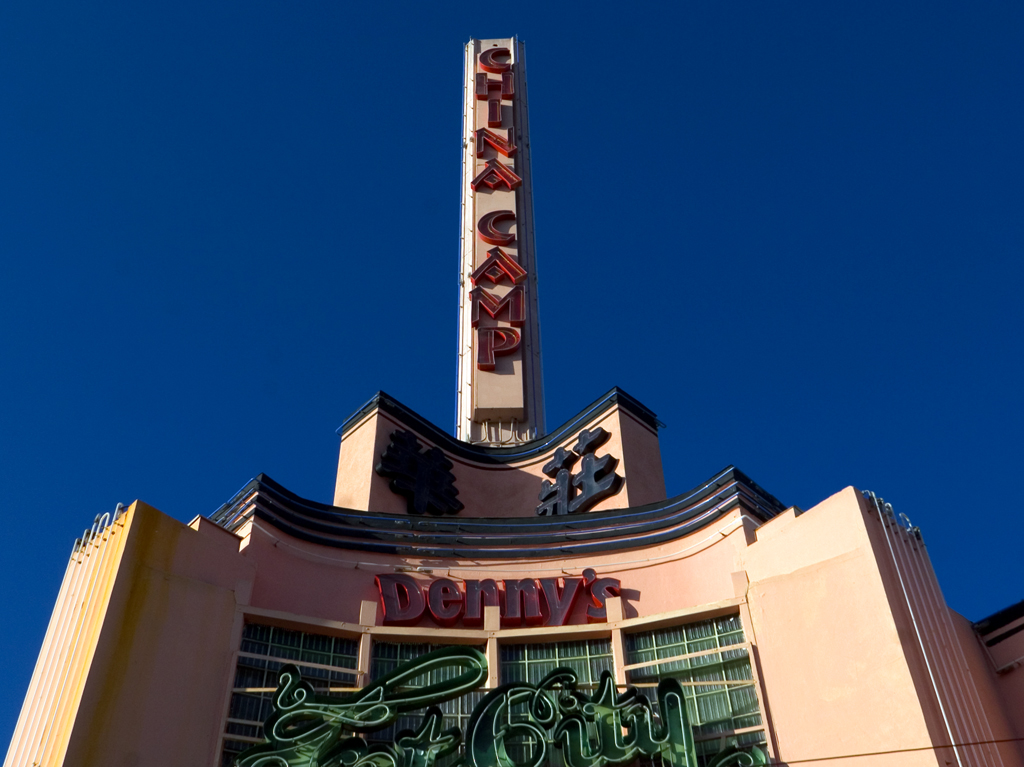 Tom Fat once told an interviewer: “I have learned, through the years, that I am my father’s son. He had an immense influence over everything I’ve done. Foremost was giving back to the community, which Fat had done since coming to San Diego in 1976 to expand his family’s business.
Tom Fat once told an interviewer: “I have learned, through the years, that I am my father’s son. He had an immense influence over everything I’ve done. Foremost was giving back to the community, which Fat had done since coming to San Diego in 1976 to expand his family’s business.
Yale Kahn and his brothers built the Circle Arts Theater on Kearny Mesa. It was a dome shaped fine performing arts center, a theater in the round. They were also admired philanthropists with United Way and the United Jewish Fund.
As a business and community leader, Tom Fat served or chaired numerous organizations, boards and task forces, including the San Diego Convention & Visitors Bureau, Super Bowl Host Committee, San Diego Restaurant Association, San Diego Foundation, San Diego Film Commission, Little Italy Association and Asian Business Association, which he helped found. He was also instrumental in expanding the Kyoto Laureate Symposium Series, held here annually.
But of all the things that mattered most in Tom Fat’s life, San Diego’s Asian Pacific Islander community came first. They saw Tom Fat as its heart, soul and, in some ways, its conscience.
The legacies of Yale Kahn and Tom Fat are intimately linked with the superb Art Deco building at 2137 Pacific Highway. And it will be demolished for the above. For THAT!
At a time when we should be observing and utilizing the best practices in sustainability, we continue to burden our rapidly shrinking landfills with huge amounts of demolition rubble of grand historic buildings such as Top’s/Fat City. Evaporating their embodied energy.
This senseless disregard for history–and of such compelling legacies–is something that is almost sickening to try and describe. The feeling you get when you hear about someone taking a hammer to a rare museum sculpture, a knife to a beloved painting, book burnings, or using antiquities for target practice. What words can accurately describe a mindset that doesn’t value our past, the memories of those who came before us, or the cultural riches we inherit?
At this point we are gathering our research to help defend this important historic resources. For now, be aware and outraged this project is even being considered. We will track this development to make sure it goes through the process properly. That the Historical Resources Board has a chance to weigh in, and that feasible alternatives to demolition are properly studied.
Your comments to this posting will be valuable to submit as part of the public dialog, so please don’t hesitate to speak up here. It will help send a message to save this building.
